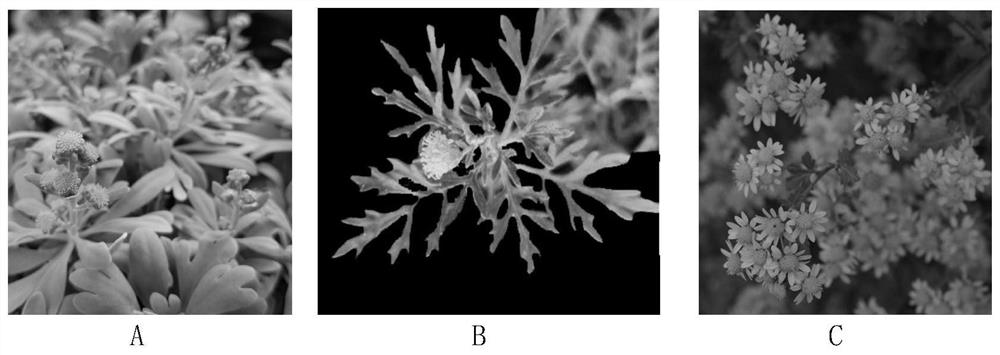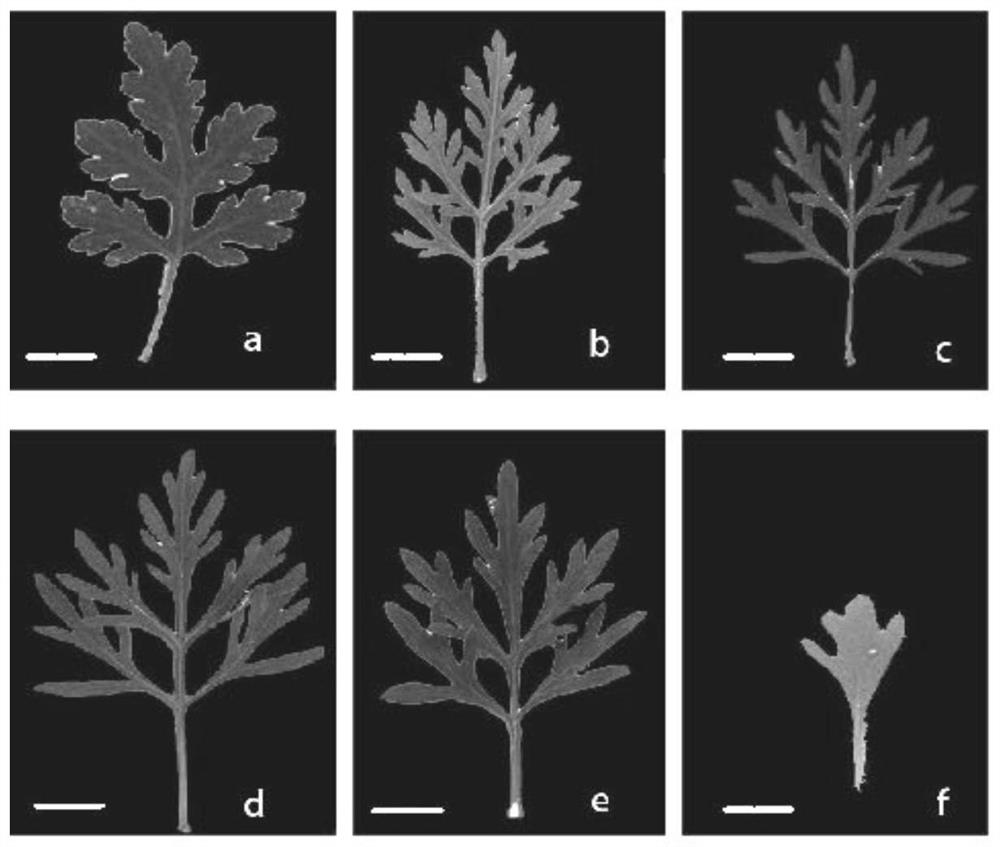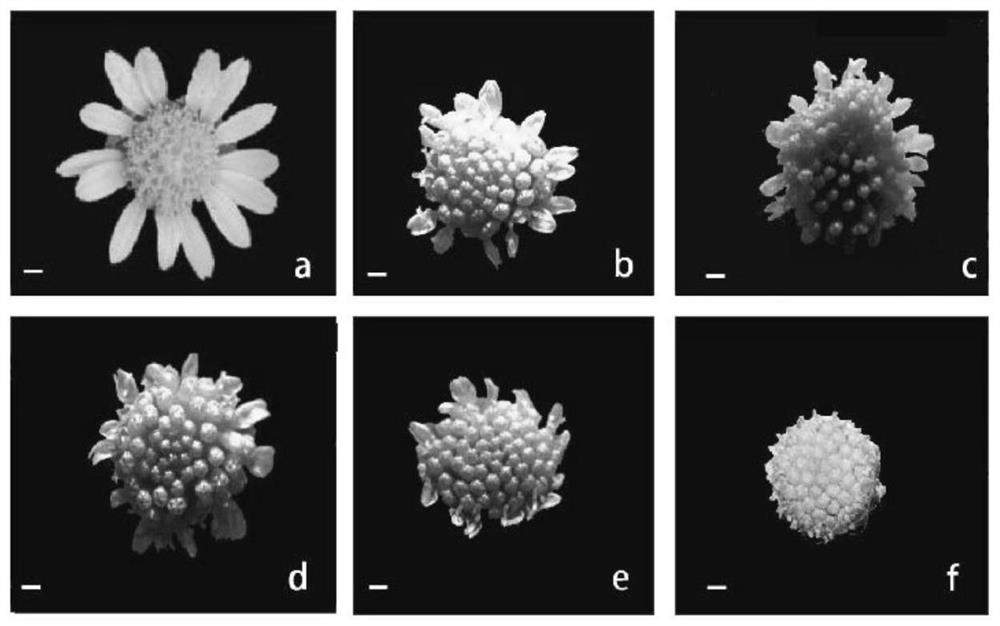Intergeneric distant hybrid creation method of crossostephium chinense and chamomile
A technology of distant hybrids and Hibiscus chrysanthemum, applied in horticultural methods, botanical equipment and methods, plant gene improvement, etc., can solve the problems of small immature embryos, difficult to peel off, and few applications, and achieve the effect of avoiding premature aging of embryos
- Summary
- Abstract
- Description
- Claims
- Application Information
AI Technical Summary
Problems solved by technology
Method used
Image
Examples
Embodiment 1
[0082] Example 1 Using Immature Embryo Rescue Technology to Obtain the Intergeneric Hybrid Offspring of Hibiscus Chrysanthemum and Chamomile
[0083] Utilize the immature embryo rescue technique to obtain the intergenus hybrid progeny of hibiscus chrysanthemum and chamomile, and the method comprises the following steps:
[0084] 1) Preparation of parents: the female parent is selected from the diploid salt-tolerant wild species of Hibiscus chrysanthemum (Cr. It is a well-known public variety. Adjust the flowering period of Hibiscus chrysanthemum, and start 8-hour short-day conservation in August, so that it will reach the full flowering period in mid-October.
[0085] 2) Distant hybridization: In the Xiaotangshan Nursery of the National Flower Engineering Center, hibiscus chrysanthemum and chamomile were hybridized in the greenhouse. Two days before flowering, the female parent was artificially detasselled and bagged for isolation, and the male parent was pollinated with fre...
Embodiment 2
[0091] 6) Obtaining hybrid F1 generation plants: after the roots of the seedlings grow to more than 1 cm, the obtained hybrid F1 generation plants are opened for 2-3 days to harden the seedlings, and the seedlings are adapted to the autotrophic growth of the field by gradually reducing the relative humidity and increasing the light and a bacterial environment. Take out the plant and wash the culture medium attached to its surface, and transplant it into a plug whose matrix is coarse-grained vermiculite:perlite=1:1. Routine management in pots after one month. Finally, 28 large seedlings of hybrid offspring of Hibiscus chrysanthemum and chamomile were obtained. Example 2 Using Morphological Observation and SSR Analysis to Identify the Authenticity of Hibiscus and Chamomile Hybrids
[0092] Utilize morphological observation and SSR analysis to identify the authenticity of Hibiscus chrysanthemum and Chamomile hybrids obtained in embodiment 1, said method may further comprise t...
PUM
 Login to View More
Login to View More Abstract
Description
Claims
Application Information
 Login to View More
Login to View More - R&D
- Intellectual Property
- Life Sciences
- Materials
- Tech Scout
- Unparalleled Data Quality
- Higher Quality Content
- 60% Fewer Hallucinations
Browse by: Latest US Patents, China's latest patents, Technical Efficacy Thesaurus, Application Domain, Technology Topic, Popular Technical Reports.
© 2025 PatSnap. All rights reserved.Legal|Privacy policy|Modern Slavery Act Transparency Statement|Sitemap|About US| Contact US: help@patsnap.com



